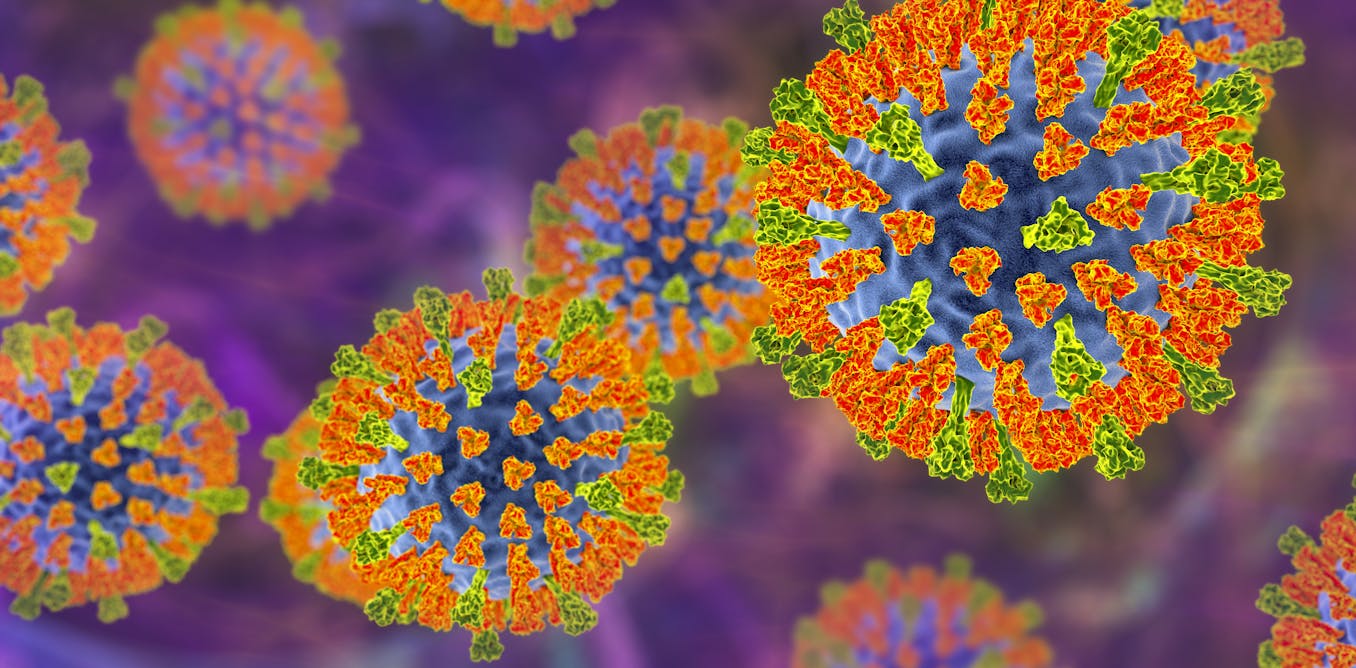WE all get the odd mark on our bodies now and then, whether it be a dry patch of skin, an odd-looking mole or a frustrating pimple.
While these are often harmless, there are times when they could indicate a deeper rooted problem.
15
Dr Gareth Patterson, known as The Irish GP on Instagram, says that when it comes to skin changes, it can be hard to know what should prompt you to see your GP, and what is less concerning, but there are ways to tell.
“Skin is a complex organ,” he adds.
“Deciphering normal from abnormal involves both the patient’s understanding of their own body, and the experience and expertise of a doctor.
“Certain skin changes should of course raise concern, as they may indicate underlying health issues.”
Keep your eyes peeled for these potential problems…
1. Hives

15

15

15
Hives, also known as urticaria, are raised, itchy welts that can appear anywhere on the skin.
Aesthetic doctor Dr Joney De Souza says they are often red, pink, or skin-toned and can fade and reappear in different areas.
“Hives occur when the body releases histamine in response to a trigger, causing blood vessels to leak fluid into the skin,” he adds.
Common triggers include allergic reactions, physical factors (such as heat, cold, sunlight, or pressure on the skin), infections (including viral and bacterial) and stress.
“Most cases of hives resolve within a few hours to days and can be managed with over-the-counter antihistamines,” Dr De Souza says.
“However, seek medical attention if your hives persist beyond six weeks, if there’s no identifiable cause, or your hives recur frequently.”
If they’re accompanied by difficulty breathing, swelling of the face or throat, or other signs of anaphylaxis, call 999 as this is a medical emergency.
2. Moles, whether old or new

15

15

15
Keeping tabs on your moles is important.
A new mole or change in an existing one could indicate melanoma, a type of skin cancer, Dr Patterson says.
New data from Vitality Health Insurance reveals that its skin cancer claims in the UK are 20 per cent higher than any other cancer – with a 15 per cent increase between 2022 and 2023.
Plus, despite new research finding that nearly a quarter (22 per cent) of people in their 30s believe skin cancer is not something they need to worry about until they’re older, 29 per cent of cancer claims for the under 30s are for skin cancer.
In some cases, a very early form of skin cancer known as Bowen’s Disease can present as a red, scaly patch on the skin
Dr Munir Somji
Dr Patterson says: “Watch out for changes in size, shape, colour, or texture.
“Melanomas often become asymmetrical, have irregular borders, and may darken or develop uneven colouring.”
If you’re worried about a mole, book an appointment with your GP as soon as possible.
The ABCDE rule
MELANOMA – a type of skin cancer – frequently starts as a new mole, or a change in mole you already have.
The ABCDE rule can be followed to assess the health of a mole.
If your mole falls into the following, it’s worth getting checked:
- Asymmetrical – melanomas usually have two very different halves and are an irregular shape
- Border – melanomas usually have a notched or ragged border
- Colours – melanomas will usually be a mix of two or more colours
- Diameter – most melanomas are usually larger than 6mm in diameter
- Enlargement or elevation – a mole that changes size over time is more likely to be a melanoma
3. Persistent sores or wounds that won’t heal

15

15

15
It’s not just new or changing moles that could indicate skin cancer.
“A sore that doesn’t heal, especially one that bleeds or crusts, may signal a skin cancer, such as basal or squamous cell carcinoma – other types of skin cancer,” says Dr Patterson.
“These may start as small bumps or rough patches and can gradually grow, ulcerate, or bleed.”
Again, visit your GP if you notice any changes.
4. A red, itchy rash

15

15

15
It’s pretty much impossible to resist the scratching when you’re dealing with an itchy patch of skin. But what’s causing it?
Dr Munir Somji, aesthetic doctor and founder of Dr Somji Skincare, says it could be eczema or psoriasis.
“This includes discoid eczema, which causes itchy, swollen and cracked skin in circular patches,” he says.
“It could also be a sign of a bacterial infection, or the likes of dermatitis, allergies or a virus.”
He adds: “In some cases, a very early form of skin cancer known as Bowen’s Disease can present as a red, scaly patch on the skin, which is slow-growing and can turn into a more serious type of skin cancer if left untreated.”
If you develop nodules or cysts, I would recommend booking in with a skin specialist to avoid any scarring
Dr Munir Somji
To reduce your risk, limit sun exposure and if you are out in the sun, wear SPF and reapply regularly.
If the rash is long-lasting and you’re unsure why it has occurred, book an appointment with your GP, who can take tests to determine the cause.
“Avoid scratching the area and try using a non-fragranced moisturiser and body wash in lukewarm baths or showers to avoid making it worse,” says Dr Somji.
“You can also hold something cool on the skin, such as a cold compress or damp towel to reduce the itching.”
5. Dark streaks under your nails

15
Also known as longitudinal melanonychia, there are several potential causes for these dark streaks under your nails.
“In some cases, they are harmless, but they may also signal underlying health issues,” says Dr De Souza.
Injury or trauma might cause these streaks or it could be benign (not cancerous) pigmentation, common in people with darker skin tones.
Dr De Souza says: “See a doctor promptly if the dark streak is new and appears without known trauma.
“You should also make an appointment if it changes in size, shape, or colour, it extends onto the skin surrounding the nail, or it’s associated with pain, swelling, or nail deformity.”
Dr Somji adds that it could be a sign of subungual melanoma, a type of skin cancer. A biopsy may be needed to rule this out.
6. A pimple that won’t go

15
Found yourself dealing with an individual spot that just won’t go away?
Dr Somji explains that this could be a sign of an infection.
“If your pimple lasts longer than six to eight weeks and does not respond to any at-home treatment, I would recommend booking in to see a dermatologist or GP to check whether this could be an infection,” he says.
However, Dr Somji does add that deep pimples that have no head can take a few weeks to go away.
“When a pimple first arises, try using products containing salicylic acid or retinoids,” he adds.
“If you develop nodules or cysts, I would also recommend booking in with a skin specialist to treat these properly to avoid any scarring by treating them yourself.
“Avoid picking these, as it can lead to scarring.”




